Top Five Main Beliefs of Tibetan Buddhism
- Eric
- Last Updated : 05/24/2024
Tibetan Buddhism is the most widely practiced religion in Tibet. It is rooted in Mahayana Buddhism and has been practiced throughout Tibet for more than a thousand years. Throughout the millennium, Tibetan Buddhism has evolved into a unique and vibrant type of Buddhism. It has also developed a unique body of teachings and philosophies.
This body of teachings and philosophies is rich and voluminous. Yet, it can be condensed into five essential doctrines, namely: The Four Noble Truths, The Noble Eightfold Path, the doctrines on Karma and Reincarnation, and the practice of Meditation. In this article, each of these beliefs will be briefly discussed.
The Four Noble Truths
Tibetan Buddhism is primarily based on the Four Noble Truths taught by the Great Buddha. Knowing and understanding these Four Noble Truths enable a believer to gain a better insight into the true meaning of life. These four noble truths are the following:
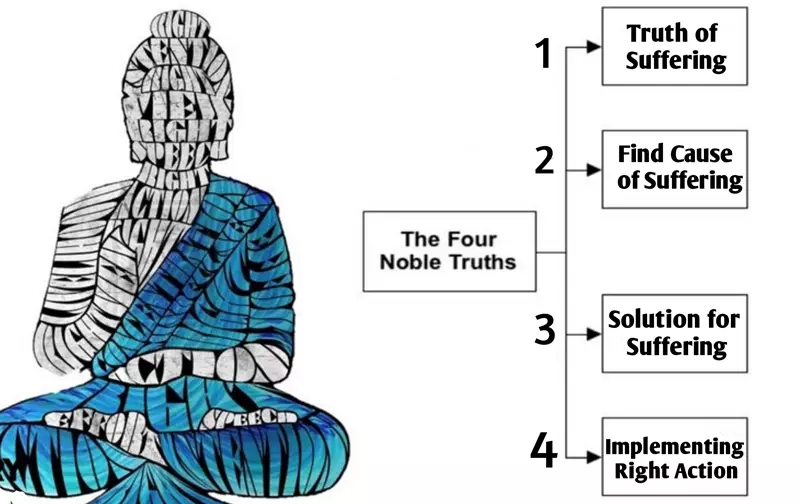
Dukkha (Anxious Suffering, Unsatisfaction)
The Sanskrit word dukkha is hard to translate into English. However, it implies that existence is fraught with anxious sufferings. Anxious suffering is present at birth. It is also present at death. Moreover, it is present in the aging process and sickness or illness. Hence, according to Tibetan Buddhism, earthly life is characterized by a cycle of birth, death, and rebirth (Samsara).
Samudaya (Arising, Origin)
Samudaya or the origin of dukkha is a central idea in Buddhism. It implies that there is a law that governs our world. This law is the fundamental Principle of Cause and Effect. Dukkha (suffering) originates from one's desire to survive, desire for non-continuation or death, and desire for sexual pleasures. Knowing that suffering originates from these various desires gives us a better idea of why we are anxiously suffering.
Nirodha (Ending or Cessation)
Nirodha refers to the knowledge of the possibility of ending dukkha (suffering). To end suffering, one must let go of desires, cravings, or thirst. Cravings, of course, come in three forms, namely: craving for sensual pleasures, craving for becoming, and craving for non-becoming. If these cravings are not rooted out, dukkha keeps on returning again and again.
Magga (Noble Eightfold Path)
Magga or the Noble Eightfold Path is the path that leads to the renunciation of desires. If you live the Noble Eightfold Path, you can end dukkha.
The Noble Eightfold Path
Understanding the Four Noble Truth leads to enlightenment. In fact, the fourth Noble Truth refers to the Noble Eightfold Path. The Noble Eightfold Path is a major doctrine of Tibetan Buddhism. The faithful practice of the Noble Eightfold Path leads to the end of the cycle of rebirth:
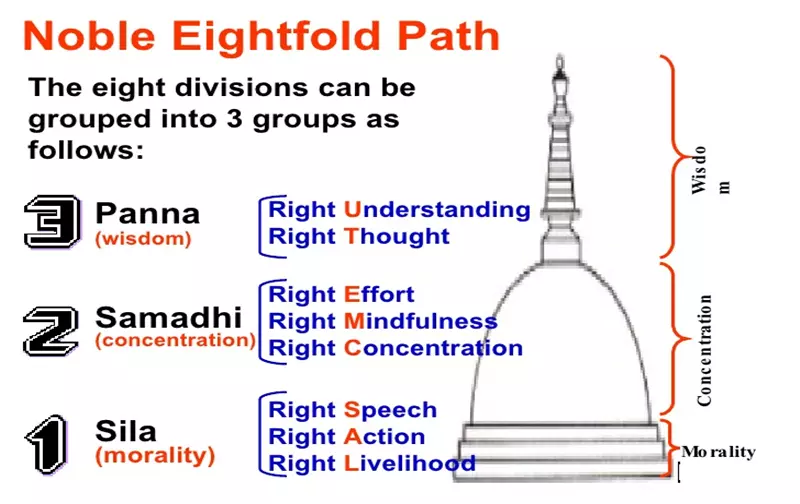
- Right Understanding (Samma Ditthi)—Right understanding refers to a clear knowledge of the abovementioned Four Noble Truths. It is the understanding of the fact that life is fraught with suffering and that suffering originates from our different cravings. This clear understanding is necessary to achieve enlightenment.
- Right Thoughts (Samma sankappa)—Clear thoughts are achieved once you have a clear understanding of the Noble Truths. Thoughts shape a person. Thoughts also lead to actions. Wrong thoughts lead to wrong actions. Right thoughts, however, lead to the right actions, renunciation, loving-kindness, and harmlessness (compassion).
- Right Speech (Samma vaca)—Right thoughts lead to the right speech. Moreover, the right thoughts should be coupled with the right speech. Hence, a person who wants to achieve enlightenment should develop the habit of right expression and communication.
- Right Action (Samma kammanta)— Right actions are the offshoots of the right thoughts. Right thoughts, of course, should be complemented by the right actions. With the right action, you can gradually escape the lingering effect of the karmic cycle of birth, death, and rebirth. You can also free yourself from this karmic cycle with the right actions.
- Right Livelihood (Samma ajiva)— A person who wants to achieve enlightenment should also find the right livelihood. Your work should never harm anyone. If it harms someone, then it is not the right livelihood.
- Right Effort (Samma vayana)— All our actions require effort on our part. Hence, to achieve enlightenment, one should exert the right effort toward that goal. The right effort also includes nurturing good habits like practicing meditation and mindfulness.
- Right mindfulness (Samma sati)— The right mindfulness refers to the right awareness. It involves constantly observing and watching yourself, including your thoughts, feelings, and imagination. Right mindfulness includes Anapanasati or mindfulness of breath which complements Vipassana or insight.
- Right Meditation (Samma samadhi)—refers to the practice of correct meditation. It also includes a deep concentration. Moreover, it includes the practice of different types of meditation.
Doctrine of Karma
The doctrine of karma is a central theme in Tibetan Buddhism. It is related to the law of cause and effect. Based on this law, the doctrine of karma says that our present actions produce consequences. The consequences may be immediate or may appear years from now or even in another form of life. Karma is viewed as an effect rather than a cause, and karma is usually stored in the consciousness of a being.
Every person needs to resolve the effects of karma. You need to rise above the cycle of birth, death, and rebirth (samsara). Anyone can resolve it by directly addressing its cause. Tibetan Buddhism holds that by understanding the Four Noble Truths and living the Noble Eightfold Path, one can resolve karma.
The Concept of Reincarnation
Tibetan Buddhism upholds the concept of Reincarnation. As a concept, it says that one can be reborn or reincarnated in another form of life. The concept of reincarnation is a necessary doctrine of Tibetan Buddhism because beings undergo the karmic cycle of birth, death, and rebirth.
As mentioned in the discussion on karma, karma is usually stored in the consciousness of a being. If you carry in your consciousness bad karma, you might be reborn in a lower form of existence which you would surely don’t like to happen. While if you carry good karma, you might be reborn in a higher form of existence. You will undergo a birth-death-rebirth cycle until you free yourself of any bad karma and attain enlightenment.
The Difference between Reincarnation and Rebirth
Reincarnation, however, is a bit different from the karmic concept of rebirth. Rebirth is involuntary and is usually due to karma. You will be reborn based on the way you have lived your past life. Yet, reincarnation in Tibetan Buddhism is voluntary. It is not due to karma. It happens because you willed it to happen.
In Tibetan Buddhism, someone who reincarnates is referred to as "Tulku." The Tulku voluntarily chooses when and where to reincarnate. He chooses to reincarnate for a purpose, i.e., to enable other beings to reach a higher form of existence. An example of a Tulko is the Dalai Lama or Panchen Lama. The Tulku is usually discovered or figured out by people through dreams, visions, divination, or consultation with oracles.
The Concept of Bodhisattva
Bodhisattva is another concept that needs to be discussed under reincarnation and rebirth. It came from two Sanskrit words “sattva” which means “sentient beings” and “bodhi” which means “enlightenment.” So, Bodhisattva etymologically means an “enlightened sentient being." In the strictest sense of the word, bodhisattva means "someone who is on his way to Buddhahood, someone who has developed that sense of spontaneous desire and a compassionate mind for attaining Buddhahood for the sake of other sentient beings.
Bodhisattvas, therefore, are those who subscribed to the Bodhisattva vows of helping other bodily beings to achieve Buddhahood. Bodhisattvas are popularly known as “Buddhist saints,”
Bodhisattva is differently depicted in varied cultures. Yet, in Tibetan Buddhism, some of the most universally recognized Bodhisattvasare those of Chenrezig, Samantabhadra, and Mañjuśrī. Every Bodhisattva has his/her dedication, and each presides over a specific aspect or realm. Tara, for example, is a female bodhisattva in Tibetan Buddhism who represents or presides over the virtues of success in works.
The Bodhisattva Path
Another corollary schema in achieving spiritual advancement in Tibetan Buddhism is that of the Bodhisattva Path. It consists of the following five paths:
- The path of accumulation
- The path of preparation.
- The path of seeing.
- The path of meditation
- The path of no more learning.
Lamaism
Lamaism—the observance of the teachings and practices handed down by the lamas—is unique to Tibetan Buddhism. Lama is a title, in Tibetan Buddhism, for a teacher of the Dharma (behaviors in accord with the principle of right order).In Tibetan Buddhism, however, Lama means the "highest principle." In the past, Lama always referred to the heads of monasteries or venerated spiritual masters.
Traditionally, the term "Lama" is only given to gurus who have achieved a certain level of spiritual enlightenment. Hence, you will often see and hear the word "Lama" appended to the names of masters and teachers like those of the Dalai Lamas and the Panchen Lamas.
Deity Yoga (Meditation)
There are different types of meditation in Buddhism. Yet, among these different forms of meditation, the most popular in Tibetan Buddhism is Deity Yoga. The word “deity” itself can sometimes be confusing. Within Vajrayana Buddhism “deity” does not mean “god”. It means a fully enlightened being. Deity yoga, then, is a practice that helps us identify with a particular fully enlightened being or Buddha in order to realize our innate Buddha nature. It's a meditation practice that involves identifying with a specific deity via the practice of visualizations and rituals.
Deity Yoga includes two stages, namely: the generation stage as well as the completion stage. In the stage of generation, one visualizes a chosen deity and focuses on its mandala and companion deities. This results in the identification of oneself with that deity. In the completion stage, one lets go of the visualization of this identification with the deity and eventually enters emptiness.
The Goal of Deity Yoga!
The goal of deity yoga is to make the practitioner realize that he and the meditation deity are of the same essence. This means that the meditator realizes that there is no duality between the meditation deity and the meditator. Non-duality is a difficult concept to explain. Yet, in simple terms, it means that the practitioner and deity become one.
As a believer frequently engages in deity yoga, he progressively becomes at one, in thoughts and deeds, with the Buddha. Moreover, through the constant practice of this meditation, the state of Buddhahood is achieved.
Another purpose of this practice is to let the practitioner realize that there is a potential Buddha in each one of us. The fact that each of us is a potential Buddha distinguishes this practice from any wishful thinking or wishing for something that can never be achieved.
Meditations, of course, is central to Tibetan Buddhism. In fact, the last three of the Noble Eightfold Path refer to the practice of meditations and its importance.
Analytic and Concentrative Meditation
There are many types of Buddhist meditation such as asubha bhavan (reflections on repulsiveness), a meditation on the pratityasamutpada (dependent origination), anussati (recollections), samadhi (concentration), and many more. Yet, Buddhist meditations can be grouped into two types—the analytical type and the concentrative type.
The analytical type is a kind of meditation that incorporates a bit of mindfulness. Yet, this meditation makes use of reasoning to gain a deeper insight into the workings of the mind and the nature of reality. Using reason, one can arrive at a concrete realization of one’s true self and the true nature of reality.
Concentrative meditation, on the other hand, is a meditation practice that helps a practitioner to develop focus. In this practice, one trains one’s mind to focus on an object. Its main objective is to enable a person to develop a single-minded focus on an object. The object can be a flame of a candle, an image, or a breath.
As one engages in concentrative meditation, one's attention always returns to the image of focus if one gets distracted. This allows the practitioner to develop the ability to stay focused and grounded. Dr. Sanjay Gupta, who practiced this type of meditation, says that “it is an exercise for developing hyper-focus.”
The Concept of Mantras
You will also encounter the concept of mantra when you read about Tibetan Buddhism and meditation. Mantra—a Sanskrit tern—refers to a sacred word or a set of words that is repeatedly uttered, sung, meditated upon, or muttered during prayers or meditation. Mantras are effective in calming the mind and setting the mood for meditation.
Mantras are not ordinary words. They are sacred words or verses that are associated with a deity. Deity mantras are an important aspect of Tibetan Buddhism. Moreover, mantras vary in length as well as in structure. An example of a mantra is that of "Om" which is considered the first manifestation of Brahman in Hinduism and is the foundational mantra.
Mandalas
If you are going to visit some Buddhist monasteries, you will be surprised to see colorful mandalas. Mandalas refer to colorful geometric configurations or symbols. They represent the whole of the cosmos. They are often used as a means or aid to deeper meditation. They are also used to focus the mind of a believer and create a sacred space while praying.
In Tibetan Buddhism, mandalas are considered sacred cosmic maps that chart the successions of Buddha. They come in woven or painted fabrics or scrolls or in huge wall hangings that are placed in the gompas of temples and altars. You will see huge mandalas in Potala Palace in Lhasa and other Buddhist temples and monasteries in Tibet.
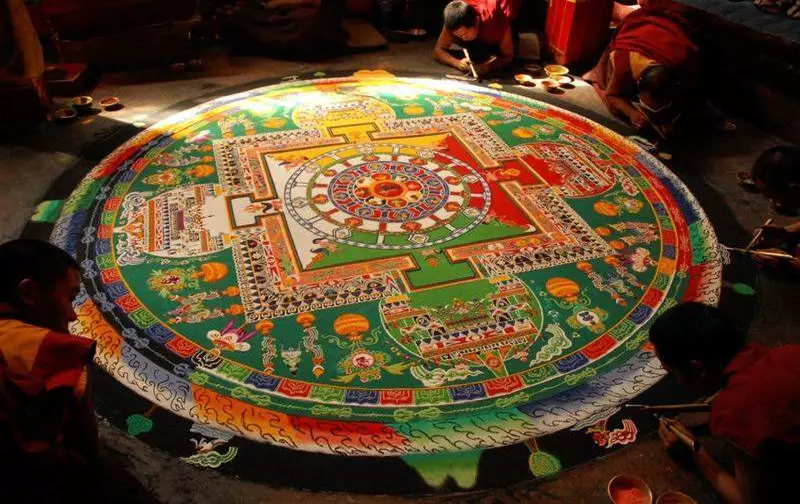
Final Words
To an outsider, the practices of Tibetan Buddhism may appear to be esoteric and enigmatic. Yet, Tibetan Buddhism is based on solid doctrines. Moreover, it embodies a sublime body of rituals, philosophies, and beliefs that are worth studying.
The practices of Tibetan Buddhism have, as its ultimate goal, the “Buddhahood” or “enlightenment” of a believer. Buddhahood is understood as a state or level of existence that is free from obstructions to freedom. It is a state of continuous happiness or bliss coupled with the achievement of enlightenment. Thus, if you are looking for a noble path towards enlightenment, you can always espouse the basic tenets and doctrines and engage in the unique practices of Tibetan Buddhism.
Email response within 0.5~24 hours.


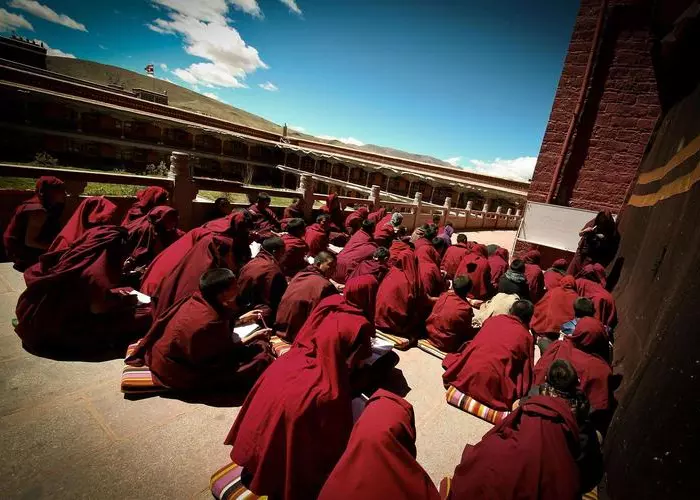
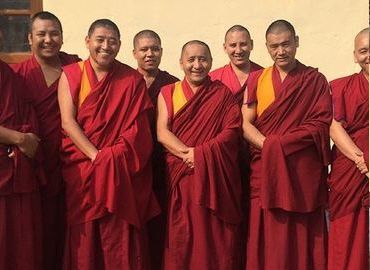
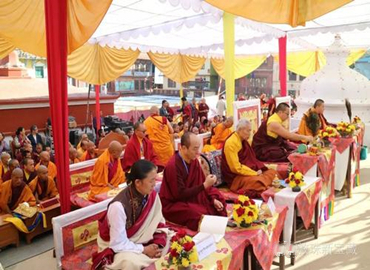


Typically Asked Questions from Our Clients
Asked by Shan***
I am interested in being whole. I want to awaken. How can I begin my journey? I seek guidance please? Thank you.
Light from my heart,
Shannon
Dear Shan****,
It's wonderful that you're interested in the Five Main Beliefs of Tibetan Buddhism and awakening on this path. Tibetan Buddhism is a profound journey of wisdom, compassion, and self-discovery. Here’s how you can begin:
1. Study the Core Teachings
Start by learning about the foundational beliefs:
Karma & Rebirth – Our actions shape our future lives.
Bodhisattva Path – Cultivating compassion and wisdom for the benefit of all beings.
Emptiness (Śūnyatā) – Understanding that all phenomena are interconnected and lack independent existence.
Guru & Lineage – Receiving guidance from an authentic teacher.
Meditation & Tantra – Deep practices that transform the mind and lead to awakening.
Books like The Tibetan Book of Living and Dying by Sogyal Rinpoche or Words of My Perfect Teacher by Patrul Rinpoche are great starting points.
2. Find a Teacher or Community
Tibetan Buddhism emphasizes the importance of a teacher (Lama). Look for a qualified teacher from a respected lineage—Gelug, Kagyu, Nyingma, or Sakya. You can also connect with a Tibetan Buddhist center near you or online.
3. Practice Meditation & Mindfulness
Start with basic mindfulness (Shamatha) and gradually explore deeper meditations like Tonglen (compassion practice) and Vajrayana visualizations.
4. Live with Compassion & Wisdom
Apply the teachings in daily life—practice kindness, avoid harmful actions, and cultivate inner awareness.
5. Consider a Pilgrimage
If possible, visit sacred Tibetan Buddhist sites like Lhasa, Bodhgaya, or local temples to deepen your connection. If you want to explore the Tibetan Buddhist temples and do a pilgrimage tour, please feel free to reach out to us.
Your intention to awaken is already a powerful step. Keep learning, practicing, and seeking guidance. May your journey be filled with wisdom and light!